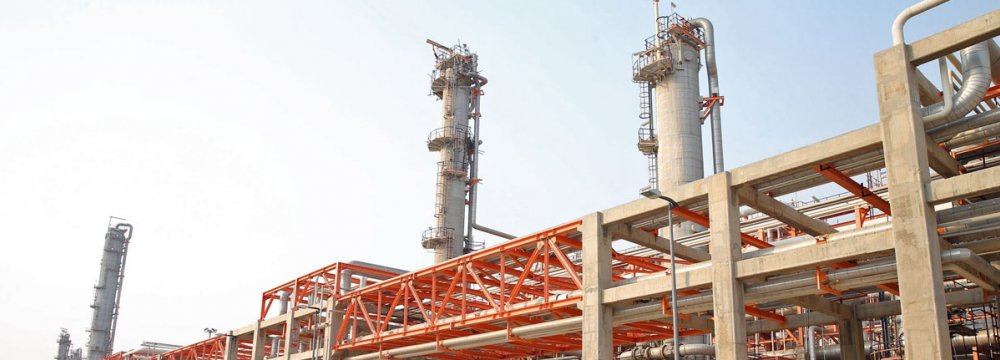
Plan to Raise Ethylene Output at Kavian Complex

The drive comes on the back of expectations that production of ethane, as the feedstock for ethylene, will jump in the giant South Pars Gas Field in the next two years.
“Considering the imminent launch of the remaining South Pars phases, the mega project is predicted to have excess ethane production in two years,” Ramazan Oladi, managing director of Kavian Petrochemical Company, was quoted as saying by NIPNA on Wednesday.
According to the official, the prospective rise in the plant's ethylene output could take place by streamlining technical and operational procedures.
Kavian Petrochemical Complex is located in the Pars Special Economic Energy Zone in Asalouyeh, Bushehr Province.
Ethylene is the building block for a vast range of chemicals, from plastics to antifreeze solutions and solvents, and is also used in the agriculture sector for ripening fruits.
With an estimated global output of over 150 million tons in 2016, ethylene is the most commercially produced gaseous compound.
Asked about speculations on the commencement of talks with French engineering company Technip S.A. in the post-sanctions era, Kavian's managing director said that in spite of the lifting of sanctions against Iran less than two years ago, there has been no contact between the companies.
Oladi noted that since the lifting of international economic sanctions last year, Kavian has pursued plans to renovate its facilities. Iran’s annual output of ethylene stands at about 7.3 million tons, 2 million tons of which are produced in Kavian.
Phase 2 of Kavian Petrochemical Complex with a production capacity of 1 million tons a year is among Iran's top petrochemical projects. It is slated to become fully operational by the end of the current fiscal in March.
The complex’s total ethylene production is consumed domestically by petrochemical plants along the West Ethylene Pipeline--a 1,200-kilometer pipeline that runs from Asalouyeh in the south all the way to West Azarbaijan Province in the northwest, feeding a string of petrochemical producers.
"Petrochemical plants used over 710,000 tons of ethylene as feedstock in the first seven months of the current fiscal year (March 21-Oct. 22)," Ali Mohammad Bosaqzadeh, the director of production control at the National Petrochemical Company, said.


Trump weighs using $2 billion in CHIPS Act funding for critical minerals

Codelco cuts 2025 copper forecast after El Teniente mine collapse

Electra converts debt, launches $30M raise to jumpstart stalled cobalt refinery

Barrick’s Reko Diq in line for $410M ADB backing

Abcourt readies Sleeping Giant mill to pour first gold since 2014

Nevada army depot to serve as base for first US strategic minerals stockpile

SQM boosts lithium supply plans as prices flick higher

Viridis unveils 200Mt initial reserve for Brazil rare earth project

Tailings could meet much of US critical mineral demand – study

Kyrgyzstan kicks off underground gold mining at Kumtor

Kyrgyzstan kicks off underground gold mining at Kumtor

KoBold Metals granted lithium exploration rights in Congo

Freeport Indonesia to wrap up Gresik plant repairs by early September

Energy Fuels soars on Vulcan Elements partnership

Northern Dynasty sticks to proposal in battle to lift Pebble mine veto

Giustra-backed mining firm teams up with informal miners in Colombia

Critical Metals signs agreement to supply rare earth to US government-funded facility

China extends rare earth controls to imported material

Galan Lithium proceeds with $13M financing for Argentina project

Kyrgyzstan kicks off underground gold mining at Kumtor

Freeport Indonesia to wrap up Gresik plant repairs by early September

Energy Fuels soars on Vulcan Elements partnership

Northern Dynasty sticks to proposal in battle to lift Pebble mine veto

Giustra-backed mining firm teams up with informal miners in Colombia

Critical Metals signs agreement to supply rare earth to US government-funded facility

China extends rare earth controls to imported material

Galan Lithium proceeds with $13M financing for Argentina project

Silver price touches $39 as market weighs rate cut outlook

















